Java caching technology plays an important role in distributed architecture, and is widely used especially in high concurrency and large data volume scenarios. The characteristic of distributed cache is to store cache data in multiple nodes to achieve data sharing and load balancing. This article will introduce distributed processing in Java caching technology, and will delve into the process, advantages and disadvantages of this technology.
1. Advantages of distributed cache
Distributed cache can cache all requests of a system, thereby achieving goals such as high concurrency, high throughput, low latency and high availability. Compared with traditional single-machine cache, distributed cache has the following advantages:
- Handling high concurrency: Distributed cache allows multiple nodes to read and write data at the same time, greatly improving the concurrency of the system Processing capability;
- Achieve load balancing: Distributed cache can perform load balancing and evenly distribute requests to multiple nodes for processing, thereby reducing the pressure and burden on nodes;
- Improve data Reliability: Since data is stored in multiple nodes, even if a node fails, data can still be read from other nodes, thus ensuring data reliability and high availability.
2. Implementation methods of distributed cache
There are two main implementation methods of distributed cache: one is based on shared memory, and the other is based on network data transmission. The way.
- Distributed cache based on shared memory
Distributed cache based on shared memory realizes data sharing in different nodes through shared memory. Its main technology is the cache consistency protocol, which aims to ensure that all nodes in the distributed cache can obtain the latest data when accessing data. In this way, all nodes share the same cache space. If a node modifies the data in the shared cache space, it must notify other nodes to synchronize the cached data, and the consistency protocol must ensure that the cached data is always consistent.
The disadvantage of this method is that since all nodes share the same memory, the size and number of nodes are greatly limited.
- Distributed cache based on network data transmission method
The method based on network data transmission is to store data dispersedly on different nodes through the network, and each node Can independently access its own storage space, thereby realizing distributed caching. In this way, network transmission is one of the key technologies, and the data transmission speed and transmission quality will have a certain impact on system performance.
The advantage of this approach is that it can support large-scale and rapidly growing scales, but due to the instability of the network, stronger data fault tolerance and consistency protocols are needed to ensure data reliability and consistency.
3. Implementation plan of distributed cache
In the process of implementing distributed cache, it is necessary to consider the problem of cooperative work of multiple nodes. Below we will introduce the two main distributed caching solutions.
- Memcached
Memcached is a high-performance distributed cache system commonly used for web applications and database intermediate cache. Its main features are lightweight, easy to use, and supports running on multiple nodes. It uses a special hash algorithm to ensure that the same key value is always stored in the same node, thereby ensuring data consistency and reliability.
- Redis
Redis is an open source in-memory data storage system that supports a variety of data structures, including strings, hashes, lists, sets, and ordered sets wait. Its unique feature is that it can store data into memory, thereby achieving high-speed data reading and writing. Redis also supports distributed architecture. Users can configure multiple Redis nodes to implement distributed caching.
4. Disadvantages of distributed cache
Although distributed cache has the advantages of efficient caching mechanism and distributed architecture, it also has some shortcomings, mainly including:
- Data consistency is difficult to guarantee: Since there are multiple nodes in the distributed cache, data consistency and synchronization issues need to be considered. If the control is not good, it will easily lead to some data inconsistencies.
- It is difficult to set the cache expiration time: Since the distributed cache is distributed on multiple nodes, it is difficult to set the cache expiration time.
- Limitations of network transmission: Distributed caching mainly relies on network transmission and is limited by the speed and quality of network transmission, so there will be some potential performance bottlenecks and security risks.
5. Summary
Distributed caching technology occupies a very important position in Java development. It can help us solve the problems of high concurrency, high throughput and large data volume. . Common distributed caches include Memcached and Redis, both of which are mature and stable caching solutions. But for issues such as data consistency processing and expiration time settings, we need to strengthen management and control. In general, distributed caching technology is a good caching solution, but various factors need to be considered in actual applications to truly take advantage of it.
The above is the detailed content of Distributed processing in Java caching technology. For more information, please follow other related articles on the PHP Chinese website!
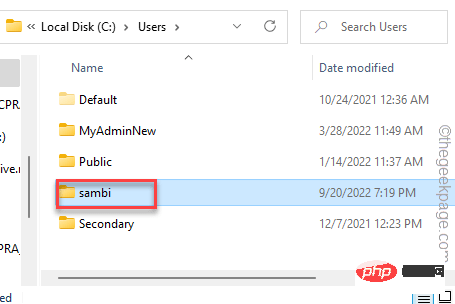 如何修复 Outlook 中缺少的 Microsoft Teams 插件May 11, 2023 am 11:01 AM
如何修复 Outlook 中缺少的 Microsoft Teams 插件May 11, 2023 am 11:01 AM团队在Outlook中有一个非常有用的加载项,当您在使用Outlook2013或更高版本的应用程序时安装以前的应用程序时,它会自动安装。安装这两个应用程序后,只需打开Outlook,您就可以找到预装的加载项。但是,一些用户报告了在Outlook中找不到Team插件的异常情况。修复1–重新注册DLL文件有时需要重新注册特定的Teams加载项dll文件。第1步-找到MICROSOFT.TEAMS.ADDINLOADER.DLL文件1.首先,您必须确保
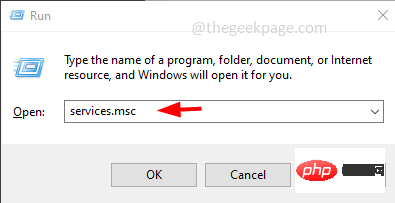 如何在 Windows 10 中清除地址解析协议 (ARP) 缓存Apr 13, 2023 pm 07:43 PM
如何在 Windows 10 中清除地址解析协议 (ARP) 缓存Apr 13, 2023 pm 07:43 PM地址解析协议 (ARP) 用于将 MAC 地址映射到 IP 地址。网络上的所有主机都有自己的 IP 地址,但网络接口卡 (NIC) 将有 MAC 地址而不是 IP 地址。ARP 是用于将 IP 地址与 MAC 地址相关联的协议。所有这些条目都被收集并放置在 ARP 缓存中。映射的地址存储在缓存中,它们通常不会造成任何损害。但是,如果条目不正确或 ARP 缓存损坏,则会出现连接问题、加载问题或错误。因此,您需要清除 ARP 缓存并修复错误。在本文中,我们将研究如何清除 ARP 缓存的不同方法。方法
 0x80070246 Windows更新错误:6修复方法May 20, 2023 pm 06:28 PM
0x80070246 Windows更新错误:6修复方法May 20, 2023 pm 06:28 PM根据几位Windows10和Windows11用户的说法,他们在尝试安装Windows更新时遇到了错误0x80070246。此错误阻止他们升级PC并享受最新功能。值得庆幸的是,在本指南中,我们列出了一些最佳解决方案,可帮助您解决Windows0PC上80070246x11的Windows更新安装错误。我们还将首先讨论可能引发问题的原因。让我们直接进入它。为什么我会收到Windows更新安装错误0x80070246?您可能有多种原因导致您在PC上收到Windows11安装错误0x80070246。
 如何在Mac上清除图标缓存?Apr 22, 2023 pm 07:49 PM
如何在Mac上清除图标缓存?Apr 22, 2023 pm 07:49 PM如何在Mac上清除和重置图标缓存警告:因为您将使用终端和rm命令,所以在继续执行任何操作之前,最好使用TimeMachine或您选择的备份方法备份您的Mac。输入错误的命令可能会导致永久性数据丢失,因此请务必使用准确的语法。如果您对命令行不满意,最好完全避免这种情况。启动终端并输入以下命令并按回车键:sudorm-rfv/Library/Caches/com.apple.iconservices.store接下来,输入以下命令并按回车键:sudofind/private/var
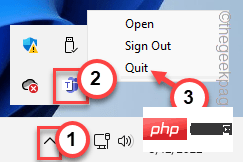 如何修复 Microsoft Teams 错误代码 caa70004 问题Apr 14, 2023 am 09:25 AM
如何修复 Microsoft Teams 错误代码 caa70004 问题Apr 14, 2023 am 09:25 AM尝试在其设备上启动 Microsoft Teams 桌面客户端的用户在空白应用页面中报告了错误代码 caa70004。错误代码说:“我们很抱歉——我们遇到了问题。”以及重新启动 Microsoft Teams 以解决问题的选项。您可以尝试实施许多解决方案并再次加入会议。解决方法——1. 您应该尝试的第一件事是重新启动 Teams 应用程序。只需在错误页面上点击“重新启动”即可。
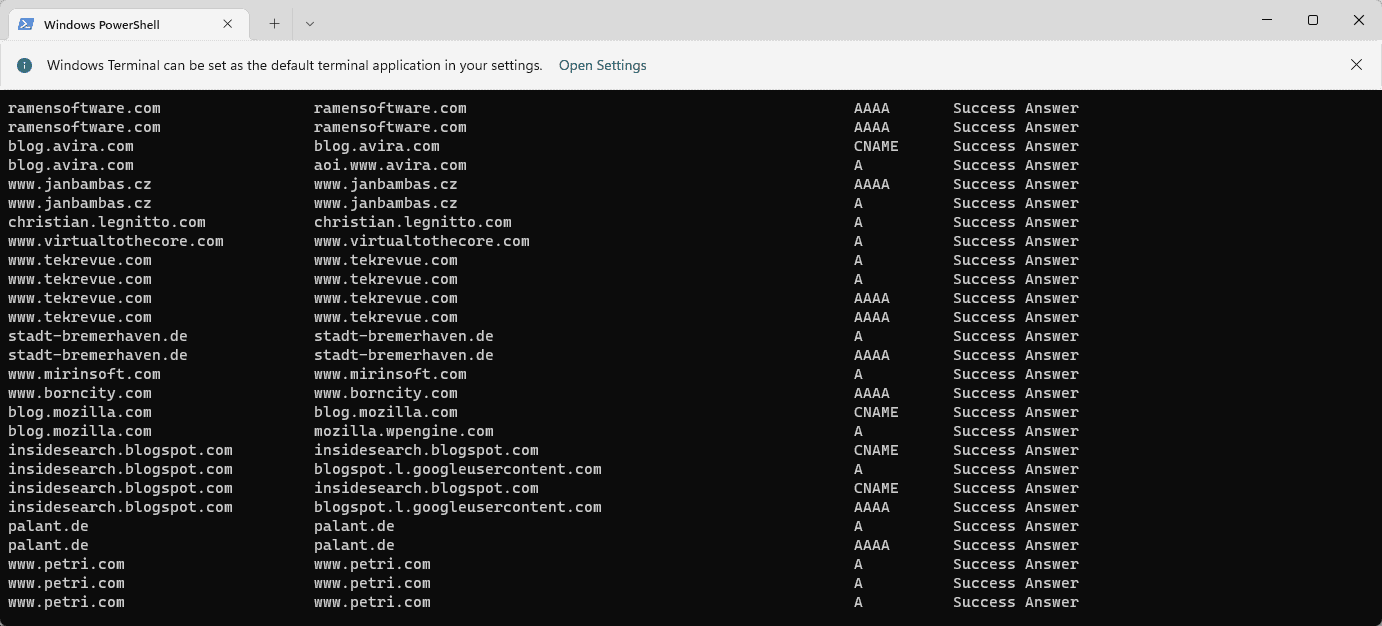 如何在 Windows 11上显示所有缓存的 DNS 条目May 21, 2023 pm 01:01 PM
如何在 Windows 11上显示所有缓存的 DNS 条目May 21, 2023 pm 01:01 PMWindows操作系统使用缓存来存储DNS条目。DNS(域名系统)是用于通信的互联网核心技术。特别是用于查找域名的IP地址。当用户在浏览器中键入域名时,加载站点时执行的首要任务之一是查找其IP地址。该过程需要访问DNS服务器。通常,互联网服务提供商的DNS服务器会自动使用,但管理员可能会切换到其他DNS服务器,因为这些服务器可能更快或提供更好的隐私。如果DNS用于阻止对某些站点的访问,则切换DNS提供商也可能有助于绕过Internet审查。Windows使用DNS解
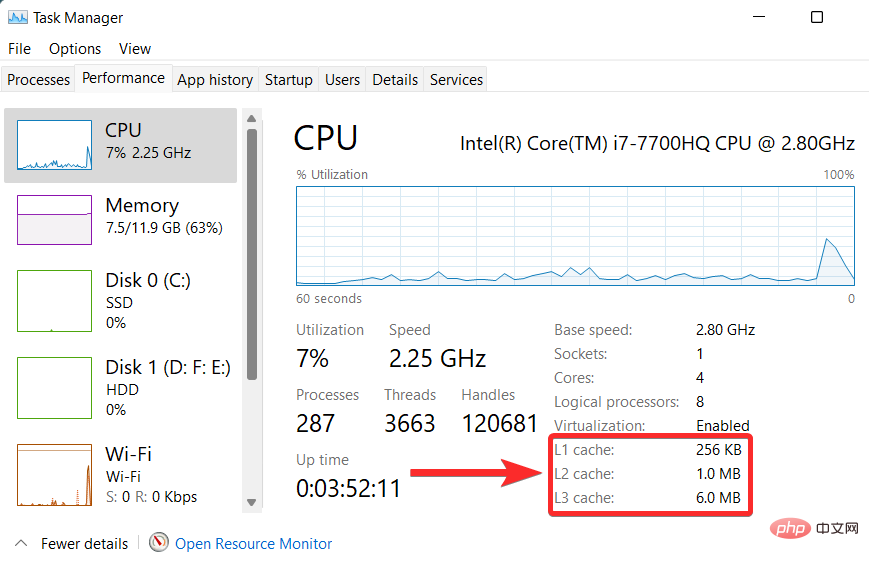 如何在 Windows 11 上清理缓存:详细的带图片教程Apr 24, 2023 pm 09:37 PM
如何在 Windows 11 上清理缓存:详细的带图片教程Apr 24, 2023 pm 09:37 PM什么是缓存?缓存(发音为ka·shay)是一种专门的高速硬件或软件组件,用于存储经常请求的数据和指令,这些数据和指令又可用于更快地加载网站、应用程序、服务和系统的其他部分。缓存使最常访问的数据随时可用。缓存文件与缓存内存不同。缓存文件是指经常需要的文件,如PNG、图标、徽标、着色器等,多个程序可能需要这些文件。这些文件存储在您的物理驱动器空间中,通常是隐藏的。另一方面,高速缓存内存是一种比主内存和/或RAM更快的内存类型。它极大地减少了数据访问时间,因为与RAM相比,它更靠近CPU并且速度
 vue的缓存有几种实现方式Dec 22, 2021 pm 06:00 PM
vue的缓存有几种实现方式Dec 22, 2021 pm 06:00 PMvue缓存数据有4种方式:1、利用localStorage,语法“localStorage.setItem(key,value)”;2、利用sessionStorage,语法“sessionStorage.setItem(key,value)”;3、安装并引用storage.js插件,利用该插件进行缓存;4、利用vuex,它是一个专为Vue.js应用程序开发的状态管理模式。


Hot AI Tools

Undresser.AI Undress
AI-powered app for creating realistic nude photos

AI Clothes Remover
Online AI tool for removing clothes from photos.

Undress AI Tool
Undress images for free

Clothoff.io
AI clothes remover

AI Hentai Generator
Generate AI Hentai for free.

Hot Article

Hot Tools

Atom editor mac version download
The most popular open source editor

MantisBT
Mantis is an easy-to-deploy web-based defect tracking tool designed to aid in product defect tracking. It requires PHP, MySQL and a web server. Check out our demo and hosting services.

Dreamweaver Mac version
Visual web development tools

PhpStorm Mac version
The latest (2018.2.1) professional PHP integrated development tool

Safe Exam Browser
Safe Exam Browser is a secure browser environment for taking online exams securely. This software turns any computer into a secure workstation. It controls access to any utility and prevents students from using unauthorized resources.






